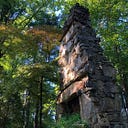Member-only story
Literary Influences in S.A. Cosby’s “All the Sinners Bleed”
Recently, I wrote about some of the ways that S.A. Cosby addresses religion and faith in his recent novel All the Sinners Bleed. Today, I want to look at another aspect of his novel that stood out to me, namely the ways that he examines the roots of enslavement and racism buried deep within the soil of Charon, the South, and the nation. He does this in various ways throughout the novel, but instead of looking at some of these numerous examples I want to zero in on the chapter where sheriff Titus Crown goes to visit Polly Anne Cunningham at Blue Hills Plantation. This chapter, more than any other section of the novel, drove home Cosby’s indebtedness to Ernest Gaines, and it caused me to think about other authors such as Frank Yerby.
The chapter opens with a description of Blue Hills Plantation. The sign on the road indicates “it had been established in 1816,” forty-five years before the start of the Civil War. Over the 200 years since its inception, the plantation survived numerous natural disasters along with the Civil War itself. Initially, the plantation produced tobacco, and that foundation allowed the Cunninghams to expand their operations into “opening a seafood factory, and later a flag factory,” this providing them with the means of constantly increasing their wealth over the generations.
